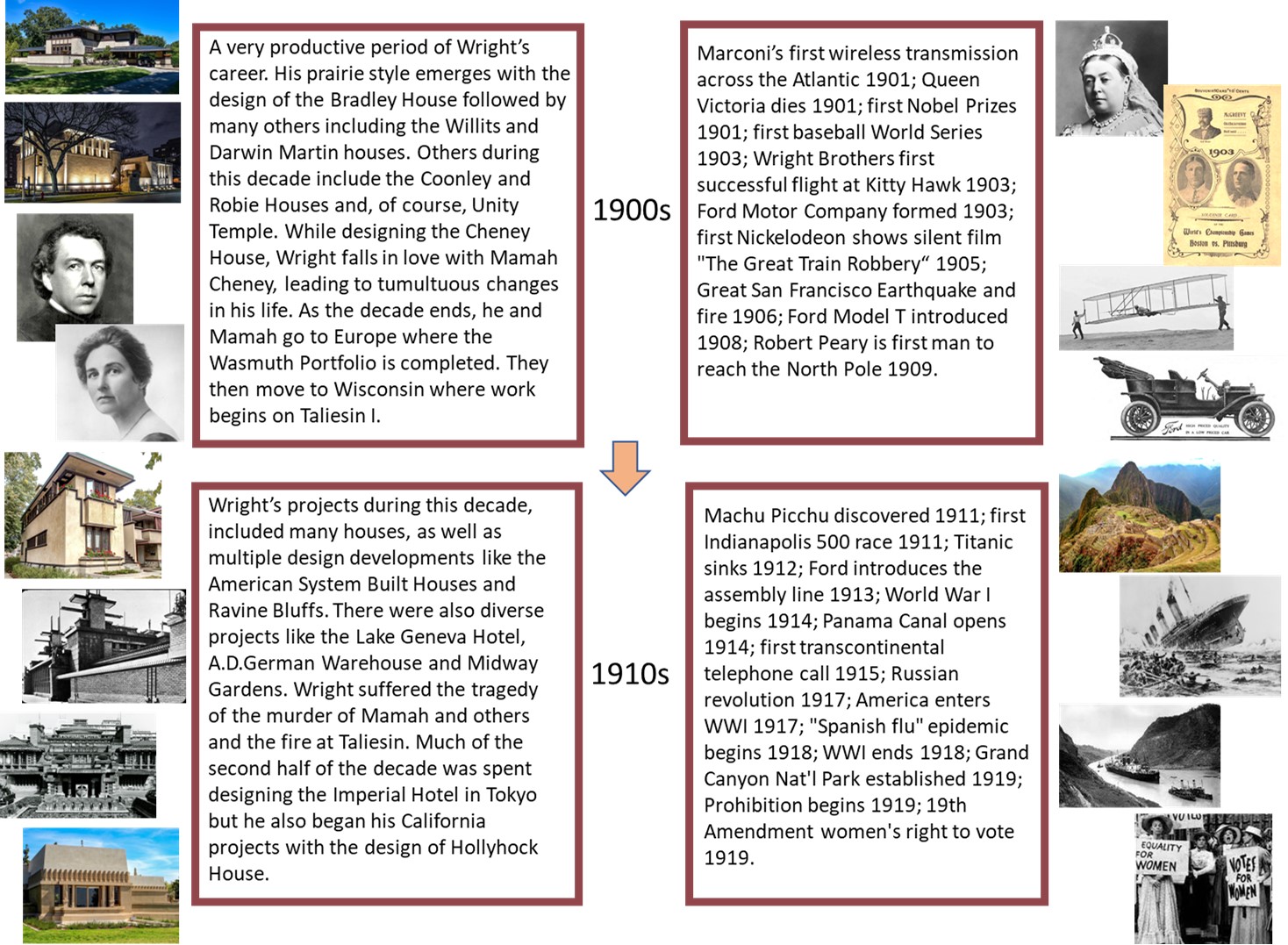Wright is much like a cinematographer in the way he evokes emotions with architecture. This is nowhere more evident than at Unity Temple where his “path of discovery” and “compression and release” techniques are used to create drama and suspense as you make your way to the sanctuary. After making the multiple 90 degree turns in the journey from Lake Street to find the doors into the foyer, a visitor still does not get a glimpse into the sanctuary. More turns are required as the ceiling height drops and you are led into one of the cloisters that flank the sanctuary. These may not be spaces that are most memorable to visitors, but they are a key part of the suspense and drama of the building.
I have always found Wright’s use of the term cloisters for these spaces fascinating. To me, cloister brings to mind a serene, colonnaded, covered walkway surrounding an open courtyard of a Spanish Mission. From the somewhat dark cloister, light streams in from the courtyard. That is the effect that Wright achieved with the Unity Temple cloisters. The suspense builds as you are compressed into the low ceilinged, dimly lit space, but you get a glimpse of the light-filled sanctuary through the gap between the raised floor of the Sanctuary and the bottom of the lower balcony. The sides of the equally-spaced pews lined up along this gap serve as the colonnade columns.
The narrow stairs from the cloisters provide the perfect last step in the drama of this ‘path of discovery” as you transition to the light-filled noble room that is the spectacular sanctuary. Leading first time visitors to Unity Temple along this path typically culminates with lots of WOWs as they leave the cloister and their eyes are drawn up to the beautiful sky lit ceiling of the sanctuary.
Ken Simpson is volunteer docent, researcher, and frequent contributor to the UTRF blog.






